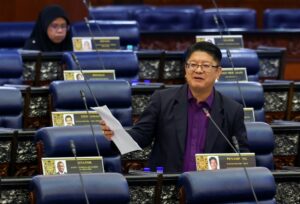KUALA LUMPUR, Oct 7 — Malaysia’s economy is projected to expand by 4.1 per cent in 2026, as private consumption – its main growth driver – continues to cool amid global trade uncertainties triggered by tariff volatility, according to the World Bank.
World Bank Malaysia lead economist Apurva Sanghi said domestic demand is expected to ease to 4.7 per cent next year, down from the 5.2 per cent projected for 2025, reflecting a five-year trend of slowing consumer spending.
Malaysia’s economy is forecast to grow at a moderate 4.1 per cent this year, in line with official projections ahead of the Budget 2026 tabling this Friday.
Exports — another key pillar of growth — saw strong momentum this year due to frontloading, as businesses rushed to ship goods before the impact of US President Donald Trump‘s “reciprocal tariffs” announced in April.
The World Bank cautioned, however, that the positive effects of frontloading are likely to unwind by 2026, potentially weighing on overall growth.
Malaysian economy is also highly sensitive to how its two top trading partners, the US and China, performs.
Just a 1 per cent drop in US growth would translate into a 0.8 per cent drop in Malaysia’s GDP growth. With China, Malaysia’s growth could slow to 0.45 per cent drop.
Up to 60 per cent of Malaysia’s export value to the US are also exported by countries that face lower tariffs, Apurva noted, meaning it could face much tougher competition since these countries could export similar but cheaper goods.
Electrical and electronic goods make up the bulk of Malaysian exports to the US. Semiconductors are currently exempt from the 19 per cent tariffs imposed on Malaysian goods, but Apurva said there is still risk that Trump may change his mind in the future.
US has launched an investigation into whether semiconductor imports pose a national security threat. The outcome could lead to high tariffs on semiconductors in the future, particularly for companies that do not invest in US-based production.
Most of the components for the semiconductors assembled in Malaysia come from China, constituting 39 per cent of total imports.
Malaysia’s E&E sector has the highest exposure to US levies among southeast asian nations, at 27 per cent.






